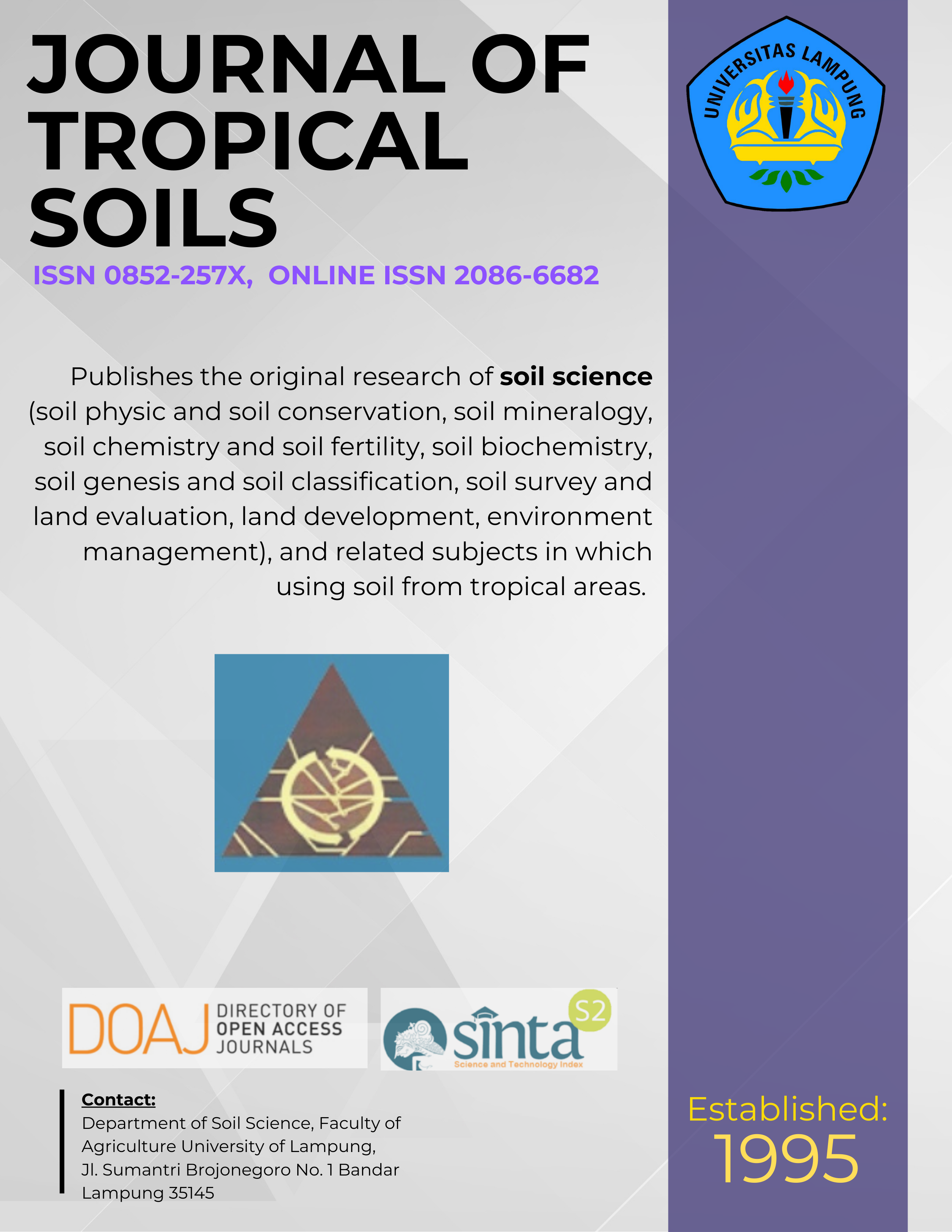Relationship between Organic-C and Available-P Due to Tidal Fluctuation in South Kalimantan
Main Article Content
Abstract
Tidal fluctuation creates different soil chemical properties which is totally deviate from normal circumstances. Organic matter decomposition occurs with limited O2 supply, hence disturbing Carbon cycle which has a central role in the process and nutrient mineralisation. The research aimed was to describe the relationship between organic-C and available-P due to tidal fluctuation in South Kalimantan. Ten undisturbed composite samples were collected in top-soil and sub-soil. Results showed that there was no direct effect from organic-C in P availability as in other mineral soils. However, there was an indication that the relationship was influenced by maturing process of the soil. In other words, the relationship between organic-C and available-P was typical for every type of swampland and was not related to the tidal fluctuation
Keywords: Available-P, organic-C, P-transformation, tidal water fluctuation
[How to Cite: Yusran FH. 2012. Relationship between Organic-C and Available-P Due to Tidal Fluctuation in South Kalimantan. J Trop Soils 17 (3) : 253-257. doi: 10.5400/jts.2012.17.3.253]
Â
[Permalink/DOI: www.dx.doi.org/10.5400/jts.2012.17.3.253]
Â
Downloads
Article Details
Section
License for Authors
Authors who publish with this journal agree to the following terms:
- Authors retain copyright and grant the journal right of first publication with the work simultaneously licensed under a Creative Commons Attribution License that allows others to share the work with an acknowledgement of the work's authorship and initial publication in this journal.
- Authors are able to enter into separate, additional contractual arrangements for the non-exclusive distribution of the journal's published version of the work (e.g., post it to an institutional repository or publish it in a book), with an acknowledgement of its initial publication in this journal.
- Authors are permitted and encouraged to post their work online (e.g., in institutional repositories or on their website) prior to and during the submission process, as it can lead to productive exchanges, as well as earlier and greater citation of published work (See The Effect of Open Access).
License for Regular Users
Other regular users who want to cite, distribute, remix, tweak, and build upon author’s works, even for commercial purposes, should acknowledge the work’s authorship and initial publication in this journal, licensed under a Creative Commons Attribution License.

